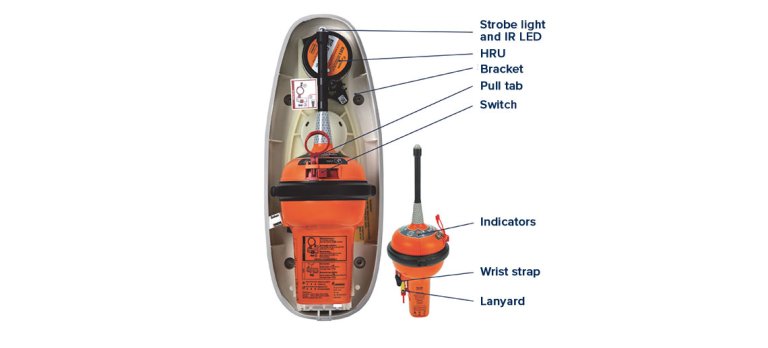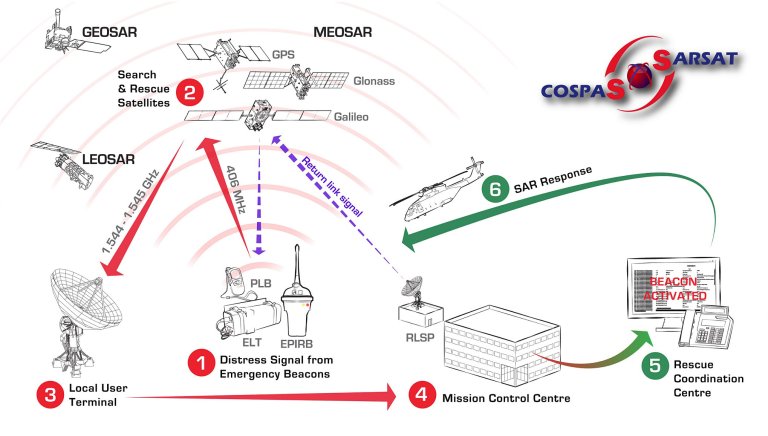EPIRB functionalities
How does an EPIRB work?
An EPIRB operates on a straightforward principle; it transmits a distress signal on a dedicated radio frequency when activated. A modern EPIRB is equipped with a GPS.

Here is a general overview of how an EPIRB works

Activation: When a life-threatening situation arises, the user activates the EPIRB. This typically involves removing a safety pin or deploying an antenna, or automatic activation by the seawater connectors on the EPIRB, depending on the type.

Transmission: Once activated, the EPIRB sends a distress signal via radio waves to satellites which are part of the global search and rescue satellite system (COSPAS-SARSAT). This signal contains a unique identifier code, which is linked to the registration details of the EPIRB. An EPIRB developed and approved according to the latest EPIRB standard, can use the Galileo Return Link Service (RLS), which gives a verification that your distress signal has been received from the shoreside. RLS is not part of the COSPAS-SARSAT system, therefore not mandatory.
Relay to a rescue coordination centre: The satellites relay the distress signal to ground stations known as a Local User Terminal (LUT) or Mission Control Centre (MCC). These facilities process the signal and determine the location of the EPIRB based on its transmitted GPS coordinates.
Alerting authorities: The ground stations then alert a local Rescue Coordination Centre (RCC) in the vicinity of the distress signal’s location. The RCC is responsible for organizing search and rescue operations.
Response and rescue: Search and rescue teams are dispatched to the location provided by the EPIRB. The transmitted GPS coordinates are crucial in guiding these teams to your exact position, which can significantly reduce response times and increase the chances of survival.
As a supplement to the main emergency distress signal, EPIRBs are also equipped with homing frequencies, to assist SAR in local detection of the vessel or person in distress. These homing frequencies are 121.5 MHz and on the latest types of EPIRB (including AIS), operating on 162.025 and 157.425 MHz.
An EPIRB plays a crucial role in saving lives during an emergency, it is therefore essential that an EPIRB is properly registered, regularly maintained, and replaced according to their manufacturer’s recommendations to ensure they function effectively when needed.
Explore additional insights:
What is an EPIRB?
The history of the EPIRB




